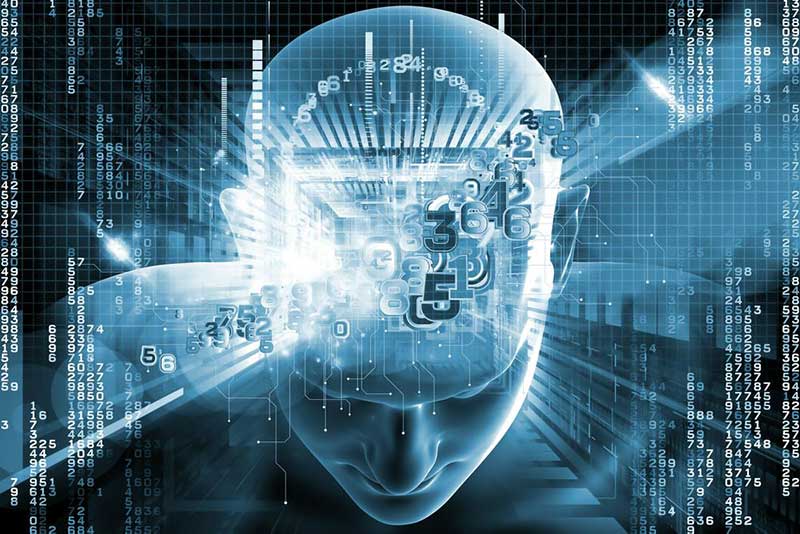- Artificial Intelligence enables accurate diagnostics and personalised medical care
- Indigo light technology keeps medical facilities free from bacteria, fungi and viruses
- Artificial retina restores sight in the visually impaired
- DARPA’s brain-controlled prosthetics enable injured war veterans to regain mobility
- Introducing: real-life tricorders inspired by Star Trek
2016 was a big year for advances in medical technology with lots of innovations in software, artificial intelligence, medical devices and diagnostics. Some of these incredible technological developments will forever change healthcare as we know it. Here’s a look at some of the most disruptive healthcare technologies of this moment.
1. Artificial Intelligence enables accurate diagnostics and personalised medical care
Medical errors such as surgery mistakes where the wrong patient is operated on or the wrong body part is treated happen regularly. What’s more, an estimated 10 to 20 percent of medical cases per year are wrongly diagnosed. These errors can cause untold damage to the health of a patient and cost healthcare providers considerable amounts of money. Now imagine a future in which a healthcare professional knows exactly which patient is about to get sick, and when and how this will happen. This is not science fiction. This reality is right around the corner. It won’t be long before doctors prescribe treatment before a disease has a chance to manifest itself. Healthcare practitioners are increasingly making use of artificial intelligence. Supercomputers such as IBM’s Watson are playing an important role in assisting medical professionals gain access to thoroughly analysed, real time clinical and medical knowledge in order to reach diagnoses and formulate treatment plans.
Using artificial intelligence leads to a significant reduction in treatment costs, unnecessary hospital procedures, more efficient hospital workflow and favourable patient outcomes. Within 5 to 10 years, using artificial intelligence, 3D-imaging technology and pattern recognition, medical professionals will be able to diagnose chronic conditions such as diabetes, heart disease and cancer in a matter of minutes. Combining artificial intelligence with remote patient monitoring technology offers patients more control over their own health through wearable devices that enable them to actively keep track of their condition. The technology will learn and adapt to the behaviour of the user and the feedback it gets from the body, leading to increasingly personalised medical care instead of one-size-fits-all treatment. According to Harpreet Singh Buttar, analyst at market research and analysis firm Frost and Sullivan, “…In 2025, artificially intelligent systems will be involved in everything from digital avatars that can answer patient queries to population health management.”

2. Indigo light technology keeps medical facilities free from bacteria, fungi and viruses
Hospitals are potentially very dangerous places. According to the United States Centre for Disease Control, almost one in every twenty-five patients contracts some type of infection during a hospital stay or even a visit, resulting in almost 100,000 deaths annually. It is a momentous task to not only keep surfaces but whole areas clean and sterile in order to prevent the spread of infection from an infected patient to the environment and thereafter to another patient. Traditionally, alcohol, bleach and chemical mists are used but these can be complicated, expensive and even unhealthy to use. Furthermore, the results are often short-lived.
A new type of light technology called Indigo-Clean can potentially revolutionise the way hospitals and other medical care facilities deal with bacteria and germs. Developed at the University of Strathclyde in Glasgow and produced by Kenall Manufacturing, the system kills bacteria like Methicillin-resistant Staphylococcus aureus (MSRA) almost instantly and on a continuous basis, by emitting 405 nanometres of visible LED light. The indigo light produced by the light bulb reflects off walls and other surfaces and is absorbed by harmful micro-organisms, resulting in a chemical reaction, similar to the effects of bleach, that stops the spread of the organism from within. The light is completely safe for continuous use at any medical facility where bacteria spread quickly. It reduces harmful bacteria, yeast, viruses and fungi, in the air as well as on hard and soft surfaces. Indigo-Clean is particularly suitable for waiting rooms, emergency rooms and areas with patients with compromised immune systems who are especially susceptible to infection.
3. Bionic eye restores sight in the visually impaired
According to a WHO report, an estimated 285 million people worldwide are visually impaired: 39 million are blind and 246 million have low vision. Causes of visual impairment or blindness include uncorrected conditions such as astigmatism, myopia and hyperopia, and untreated cataracts or glaucoma. With the help of technology, some causes of low vision or blindness can be corrected. For people having lost their vision as a result of retinal degenerative diseases, for instance, there is now a sophisticated solution to restore their sight. The Nano-Retina NR600 is a type of bionic eye system that comprises an artificial retina implant chip, used in combination with a set of glasses. The system replaces the non-functioning photoreceptor cells in the eye and creates electrical stimulation to activate the healthy retinal cells that have remained. It is the only artificial retina with a 3D neural interface technology and internal power supply. Bionic eyes like the NR600 from Nano-Retina and other key players in the global artificial retina market such as Optobionics and Second Sight are well on their way to address the need of millions of people suffering from retinal degenerative diseases, hopefully one day leading to reversing blindness.
4. DARPA’s brain-controlled prosthetics enable injured war veterans to regain mobility
DARPA, the Pentagon’s research division, is dedicated to uncovering the secrets of biology’s engineering and designing new defense technology. With a $296 million budget, they have been exploring human-machine symbiosis and memory improvement, among many other things. One area they are focusing on in particular is to enable injured military personnel with amputated limbs to regain mobility via brain-controlled prosthetic limbs. DARPA’s research and development in this field will also impact many other patients suffering from neurological diseases and spinal cord injuries.
There has been a lot of talk about mind-controlled prosthetics such as the ‘Luke’ arm. Luke (Life Under Kinetic Evolution – but also named after Luke Skywalker from Star Wars who had a robotic appendage) – is the world’s most sophisticated prosthetic limb. It is not yet commercially available, but a few veterans were given access to the first production run. The prosthetic limb is controlled by sensors implanted in the brain and it also transmits electrical impulses back to the sensory cortex in order to restore the user’s sense of touch. Pilots with the Luke arm enabled users to open locks, brush their hair and pick up various small items like grapes. Luke weighs as much as an adult arm, is capable of 22 degrees of motion and enables the user control of all fingers. The prosthetic arm can ‘understand’ various instructions simultaneously, enabling it to move very naturally. The arm is currently undergoing human testing in order to tweak the technology further. Focus is to optimise the sensory feedback algorithms and to improve neural control over the arm.
5. Introducing: real-life tricorders inspired by Star Trek
Star Trek fans will undoubtedly remember the tricorder Dr Leonard McCoy used to instantly diagnose medical conditions by collecting physical information about a person. The fictional device can detect the presence of dangerous organisms, check vital organ functions and human physiology. The tricorder has spawned various real-life equivalents in the form of smartphone apps and devices that send reminders about medication prescription renewals or use sensor technology to monitor the user’s breathing rate, heart rate, perspiration levels, temperature and so on.
One example is the Scanadu Scout Medical Tricorder, a small hand-held sensor device with the ability to detect vital signs such as temperature, breathing and heart rate, pulse transmit time and blood oxygenation. It can also run an ECG, perform urine analyses and calculate ‘stress metrics’. In order for the device to take a reading, it needs to be held against a person’s forehead for a few seconds. It works in combination with a mobile app.
Another example is the Changhong H2 smartphone that was unveiled at this year’s CES. Hailed as the world’s first ever real-life ‘tricoder’, the H2 is the brainchild of Israeli startup Consumer Physics and Changhong, one of China’s largest electronics manufacturers. The device is fitted with a SCiO molecular scanner that is able to identify the molecular fingerprint or chemical makeup of any object or material. It does this by beaming a type of infrared light onto an item. It then absorbs the light that reflects off the item, breaks it down into a spectrum after which it is analysed. The H2 can tell whether a product is fresh or how many calories your muffin contains. The device can also identify a person’s body mass index or the chemical composition of pills. It’s not hard to see the potential of this device for future healthcare applications. The phone will go on sale in China in June this year in limited quantities and will cost around $440.
Just a snapshot
The innovations mentioned in this article are just a snapshot of the myriad of new or improved technologies that are entering the healthcare sector and reshaping medicine as we know it. Some of these breakthroughs are still awaiting FDA approval or proof of value. Others require new thinking and integration into existing medical systems to be fully realised. What is certain is that technology will continue to disrupt healthcare, enabling medical providers access to new tools and innovative ways to practice medicine, saving countless lives while and improving the overall quality of life.





